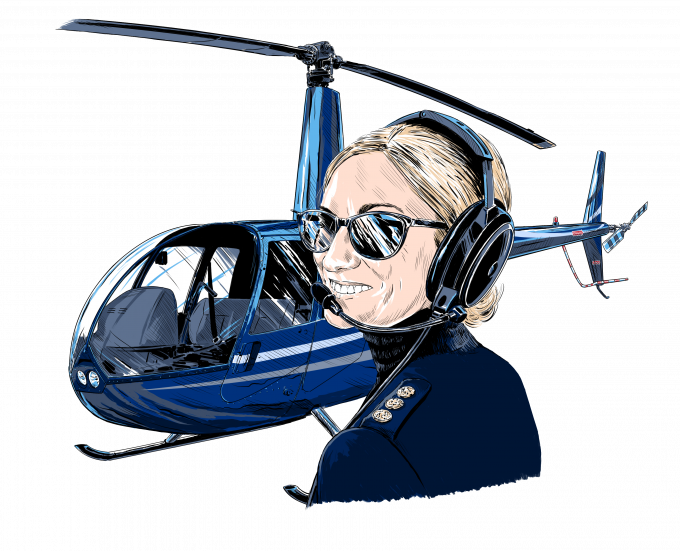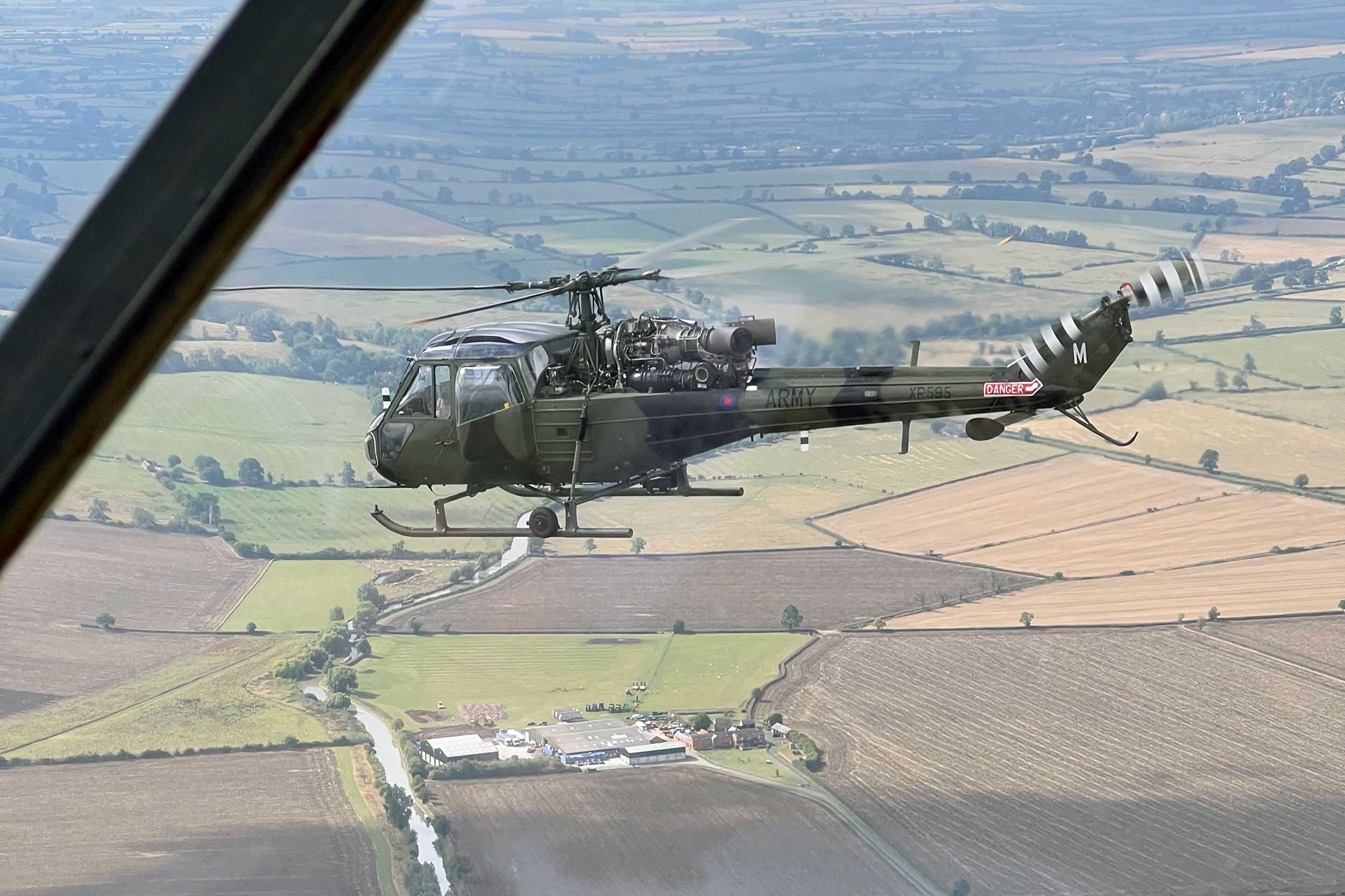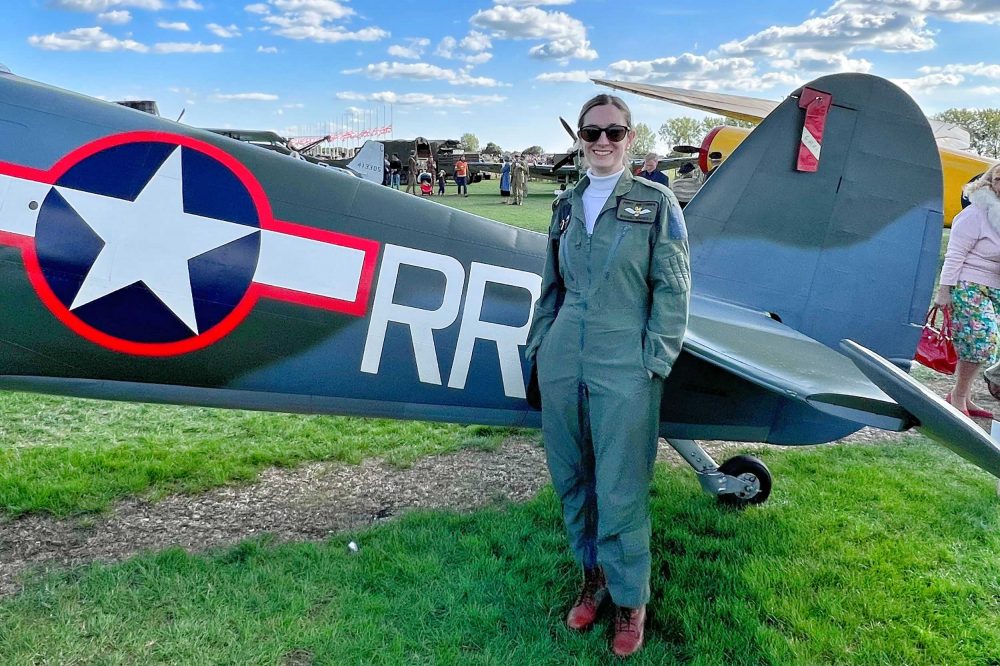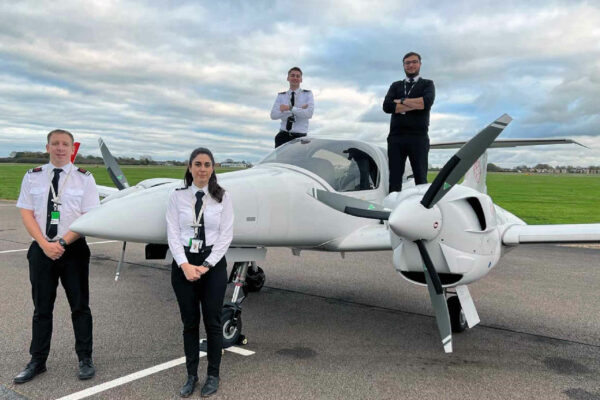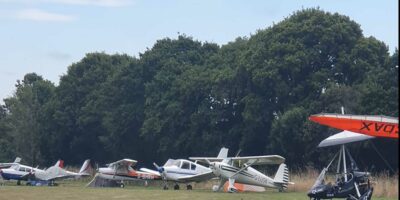I’ve been lucky to have had a couple of days out in the Westland Scout this month – an unexpected, and most welcome, side effect of having spent some time getting to know this iconic machine for my article on old military helicopters earlier this year.
As I wrote in said article, my friend Alex Bishop splashed out on the type rating over the summer, and is consequently in the fortunate position of being able to self-fly-hire the Scout from our friends at Dragonfly Aviation.
With its illustrious military heritage dating back to 1963, we considered it the perfect machine in which to make our first foray into the world of the legendary Goodwood Revival, where we reckoned it would fit right in with the 1940s, 50s and 60s vibe for which the Revival is renowned.
It was with considerable excitement that we donned our flying suits and studied the arrival procedures for Goodwood Aerodrome, which was shut to fixed-wing traffic and transformed into a busy heliport for the duration of the event.
The instructions were straightforward: pick your reporting point depending on the direction you’re approaching from (for us, ‘panels’, of the solar variety), join directly from there and aim for the runway midpoint. So much simpler than faffing about with overhead joins!
On hover taxying to parking, the ‘pride of place’ spot, promised to us by the chap in the tower, turned out to be lined up with all the other helicopters on the other side of the runway from the show, which we felt somewhat diminished the spectacle of the Scout’s arrival. But we were certainly conspicuous among the AW109s, AS355s and EC130s, and happily, we bumped into several charter pilot friends immediately on landing. The helicopter world is a remarkably small one.
We were taken in a very old Land Rover across the airfield to the show entrance, where there was an enclosure of wonderful old aeroplanes that included ‘Miss Pick-Up’, one of the world’s few remaining airworthy Catalina flying boats.
Wandering amid a sea of Spitfires and other relics of a golden age of aviation, it struck me that there’s a romance to vintage aeroplanes that helicopters – even cool old military ones – just don’t have. But what helicopters lack in romance, they more than make up for in excitement.
Proving this point were my memories of the previous week, when we had been on an adventure with not one but two of the UK’s eight or nine remaining airworthy Scouts. We had originally been designated to fly into Abingdon Airshow in a loose formation of two Scouts and a Wasp; Mark Cowley, owner of Dragonfly Aviation, had spent considerable energy putting together his display for the show. However, HM Queen Elizabeth II’s death meant it was not to be, so Mark kindly invited Alex and me to join him and Andrew, the other Scout and Wasp owner, for a lunch trip instead.
To make up for no airshow action, Mark had planned an exciting day for us. First, we flew his Scout to Andrew’s house and gathered around the kitchen table for a briefing on formation flying. Alex and Mark would be in Mark’s Scout, and I’d be in the other Scout with Andrew. We’d be flying, Mark explained, as close as one or two rotor diameters apart, so getting everybody on the same page before take-off was critical.


